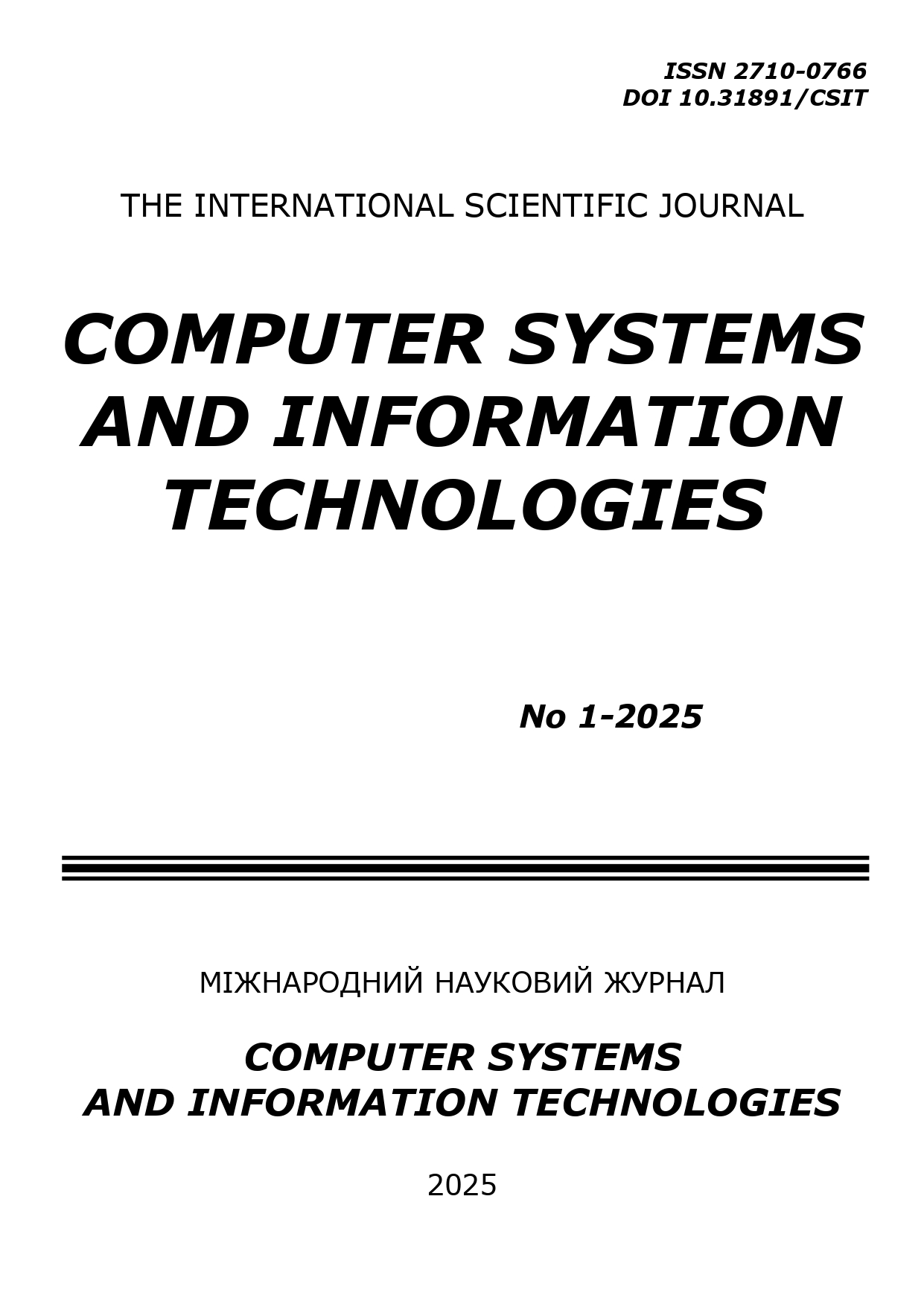METHODS OF ELECTROCARDIOGRAM CLASSIFICATION AND THEIR MATHEMATICAL MODEL IN THE FORM OF A CYCLIC DISCRETE RANDOM PROCESS
DOI:
https://doi.org/10.31891/csit-2025-1-11Keywords:
electrocardiogram modeling, cyclic random process, amplitude-time characteristics, cardiac signal analysis, mathematical modeling, time rhythm function, cardiac diagnostics, ECS peak morphology, stochastic signal processing, cardiovascular disease detection, pattern recognition, cardiac arrhythmia, extrasystole cardiac rhythm disorders, biomedical signal analysis, signal classification, artificial intelligence, machine learning system, neural networkAbstract
This paper presents an advanced approach to modeling electrocardiogram signals by integrating amplitude-time characteristics to obtain novel and informative features for cardiac diagnostics. Based on a systematic analysis of 426 scientific publications from the Scopus database (2014-2024), we identified a significant transformation in methodological approaches from classical signal processing to the implementation of modern artificial intelligence technologies. A geographical analysis of publications revealed that India, the United States, and Germany led the research in this field, with 78, 64, and 37 publications, respectively. The thematic distribution of works encompasses computer science (23.3%), engineering (22.4%), medicine (13.8%), and related fields, highlighting the interdisciplinary nature of these studies. We identified key developmental directions in electrocardiogram signal processing methods, including the improvement of filtering algorithms and data preprocessing, the development of new methods for extracting informative features, and the creation of hybrid classification systems. Particular attention was paid to integrating machine learning methods with traditional approaches to electrocardiogram signal analysis. The research demonstrated that while convolutional neural networks exhibit high classification accuracy (>95%) for cardiac arrhythmias, there remains a need for mathematical models that account for both rhythmic and morphological features of ECS signals. We propose a model of cyclic discrete random process with a time rhythm function that incorporates amplitude values of characteristic ECS peaks (P, Q, R, S, T). This model effectively captures the inherent cyclicity of ECS signals while accounting for their stochastic variations and corresponding amplitude values of diagnostic waves. The model distinguishes between regular and irregular cardiac rhythms. Experimental validation using ECS signals from healthy individuals and patients with extrasystole demonstrates the model's sensitivity to changes in cardiovascular system states. The time rhythm function, considering amplitude, exhibits distinctive patterns that effectively differentiate between normal and pathological conditions. The proposed mathematical framework expands the analytical toolset for ECS signal processing and provides a foundation for developing new diagnostic algorithms with enhanced accuracy for cardiac rhythm disorders.
Downloads
Published
How to Cite
Issue
Section
License
Copyright (c) 2025 Любомир МОСІЙ, Андрій СВЕРСТЮК

This work is licensed under a Creative Commons Attribution 4.0 International License.

